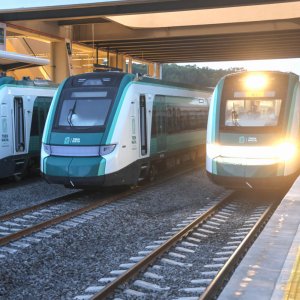Experience and Financial Capacity Determine Success

STORY INLINE POST
PPP projects have long been a way for the public sector to mitigate risk by tendering projects to its private counterpart. But the private sphere is no longer as willing to gamble on these projects and is taking out its own insurance in the form of consortiums. These alliances provide many benefits for bidders, especially for megaprojects like NAICM, because they allow smaller companies to compete with more experience and less risk allocation, according to Jorge Torruco, Construction Director of Grupo Omega. This means that the market is no longer dominated by international construction giants and as a result, smaller, national companies can grab hold of their market share even without the cash flow of the majors. “Experience and financial viability are the two main characteristics construction companies must have to successfully win a tender for NAICM,” says Torruco. With both aspects provided by a consortium, in addition to better risk mitigation, this option becomes a beneficial solution for midsized companies.
Since Grupo Omega was founded in 1982, the group has gained experience in developing and constructing projects such as highways, hydroelectric plants and MTS throughout the entire country. The group’s vast knowledge of the industry, strong alliances with other construction companies and ability to efficiently manage projects motivated it to take on the challenge of participating in NAICM. The construction of the new airport began with the first tender package, labeled “Leveling of the Terrain,” which contained three tenders. One was launched for the clearing of the debris and land preparation for the project’s foundations on Lake Texcoco. After a rigorous tendering process, Grupo Omega, along with Calzada Construcciones (Calco) and Construcciones y Dragados del Sureste (Cydssa) were awarded the bid.
This consortium was different to the others in that it was one of the first where all three members were 100 percent Mexican companies. “Although all consortiums were required to incorporate Mexican components, the level of experience needed to complete the project traditionally calls for a consortium with international companies,” says Torruco. This tender, however, required experts with years of experience working on Mexico’s terrain in particular. “Mexican companies had the advantage of familiarity with the land and its unique characteristics,” he says. “The subsoil in Mexico City is difficult to build on and Lake Texcoco poses a real challenge to all construction companies participating in the project.” During the first phases of the tender, the consortium cleared the debris, trash and other elements that would pose a challenge to the construction of the two runways and terminal building. “We removed more than 3 million m3 of material, transported it to banks authorized by various governmental agencies and then replaced it with materials such as tezontle, a highly oxidized volcanic rock,” he says.
One of the main challenges Omega and the consortium faced was transporting the debris. Although the NAICM plot measures 4,430ha, the roads that existed were crude and difficult to navigate. “While we were working, there were other consortiums working on leveling the terrain, preparing the water infrastructure and other preconstruction work,” says Torruco. “The primary paths were saturated with thousands of trucks belonging to different participants. Omega alone had more than 2,000 trucks working on our tender.”
Another challenge was finding ways to work with labor unions, which also tend to be a different animal in Mexico. “Working with construction labor unions is a challenge in itself because they do not follow a defined legal structure,” Torruco says. “Instead their work is based on trust and how close they are with the company.” Mexico’s construction sector is composed of various unions, such as the Mexican Workers’ Confederation (CTM), that have a great impact on infrastructure projects. Torruco says it is essential to know how to create long-lasting relationships with unions since they have the power to provide unfavorable pricing or working conditions.























